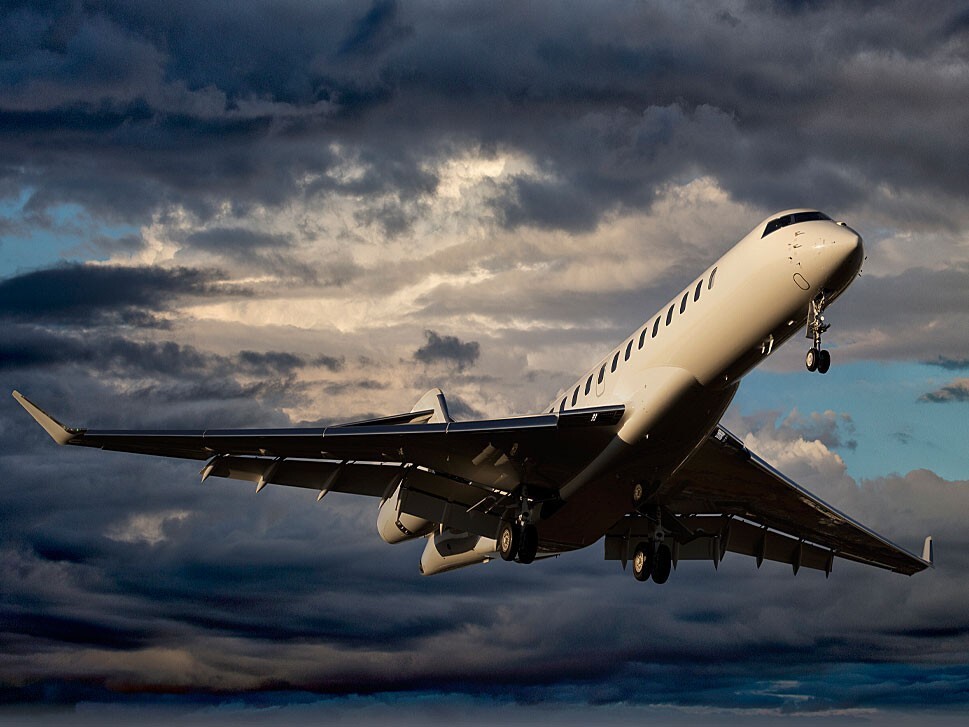- 15 Jul 2022
- Matt Harris
- Aircraft MRO
Determine a Jet’s Value by its Maintenance Status
How does maintenance status impact the value of a business aircraft, and what actions can buyers and sellers take to better determine true value? David Wyndham provides an outline...
Back to Articles
Previously, we looked at the cyclical nature of aircraft maintenance expenses, concluding there’s a need for analysis of an aircraft’s maintenance condition, both in terms of current status and upcoming events, and its physical condition of the aircraft. These will help to establish what a fair value is.
This time, we consider the area in more detail, highlighting actions an aircraft buyer or seller can take to better determine its value.
There are three major variables when determining the value of an aircraft. Aircraft age and utilization are the two variables that, once they’ve occurred, cannot be undone. Aircraft value declines with both. The third variable is maintenance status. What maintenance has already been done, and what is yet to be done are within the control of the owner, and will also impact the aircraft’s value.
Let’s look at an example. Assume an eight-year major airframe inspection has a total cost of $800k.
- Every year from new, the inspection gets closer, averaging $100k in maintenance expense accrued annually. This is your accumulated financial exposure for the future maintenance due.
- At age five, the financial exposure reaches $500k. You have $300k yet to accrue. This amount is your maintenance equity.
Now let’s look at three sample aircraft, each with a different financial exposure with respect to this single $800k maintenance inspection.
- Aircraft A: Age 7; $700k financial exposure
- Aircraft B: Age 8; $800k financial exposure (inspection due)
- Aircraft C: Age 8; $0 financial exposure (inspection accomplished)
As a buyer, which of these three would most interest you?
Even though Aircraft A is the youngest, it has a financial exposure (accrued expense) of $700k. Having just completed the inspection, Aircraft C, although older than Aircraft A, now has zero financial exposure – or $800,000 in equity related to this inspection.
If you repeat this process for each inspection, component overhaul, and part replacement, you can end up with a chart like Chart A (left), which is based on hours flown.
As depicted, a new aircraft has zero financial exposure since all maintenance events are ‘fresh’ with zero time accrued. As the aircraft flies, individual maintenance events accrue more financial exposure. Periodically (hours or months) some maintenance will be accomplished, reducing the financial exposure (or adding equity).
After the aircraft enters service, the financial exposure is never at zero since the aircraft is always accumulating time towards one future maintenance event or another.
What Can Sellers do to Reduce the Exposure?
First, the seller needs to work with an experienced broker to look at the current marketplace. Where is the Seller’s aircraft positioned in relation to the other competitive aircraft available for sale?
If the Seller’s aircraft is well positioned, relative to similar aircraft (i.e., in terms of age, airframe/engine hours, and maintenance financial exposure), then the ask price can reflect this desirability.
However, if the Seller’s aircraft is not in a strong position relative to the other aircraft for sale, the Seller and broker will need to discuss either a price relative to its position, or undertaking some of the future maintenance ahead of schedule, which will better position it among the competition.
Alternatively, the Seller could place the aircraft on a guaranteed hourly maintenance program (GHMP).
Depending on the model and category, an engine GHMP is almost a requirement. Engine or airframe GHMP can be very desirable for buyers as they cover the financial exposure for the covered maintenance to the extent of the accrued coverage.
Enrolling a used aircraft on a GHMP can be costly, since you are essentially ‘buying in’ the hours already accrued towards the next event. Therefore, this may be an option that needs careful discussion with your broker.
What Should the Buyer Do Regarding Maintenance Exposure?
The buyer needs to educate themselves about the risks and rewards of each aircraft they’re considering for purchase. How does one aircraft compare with the available options in the market – including when compared to the cost of acquiring a new aircraft with zero time, zero age, and almost zero flight hours?
- What is the maintenance status of each aircraft available for sale?
- What is their financial exposure?
Remember, if you acquire an aircraft with substantial maintenance coming due, you accept the financial exposure of that maintenance, not to mention the downtime while the maintenance is accomplished.
A GHMP may be desirable, and that program shares the risk of the maintenance costs.
Regardless of whether the aircraft is on a GHMP or not, a pre-buy inspection is always recommended to verify the condition and status of the aircraft you’re in the process of acquiring. An acceptance flight is also a good idea as it gives the buyer the chance to confirm the working order of everything from the lavatory to the landing gear.
Lastly, note that while this article deals with the maintenance condition, there are other considerations – such as level of equipage, cosmetic condition, quality of the maintenance records, and more, that should be part of the decision of whether to buy or not.
Read Part 1: How Does Maintenance Status Impact Jet Value
Related Articles
- 13 Jun 2022
- David Wyndham
- Aircraft Ownership
- 23 Apr 2021
- David Wyndham
- Aircraft MRO


